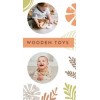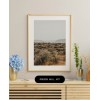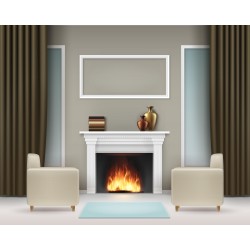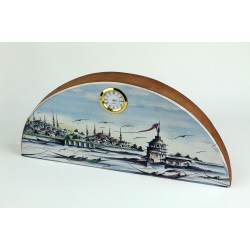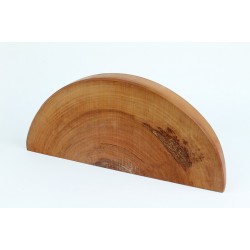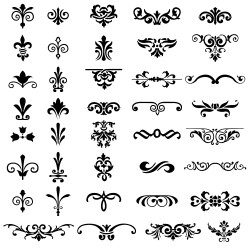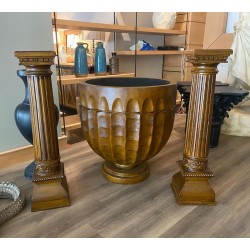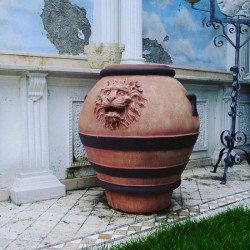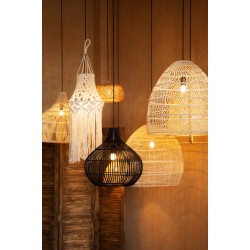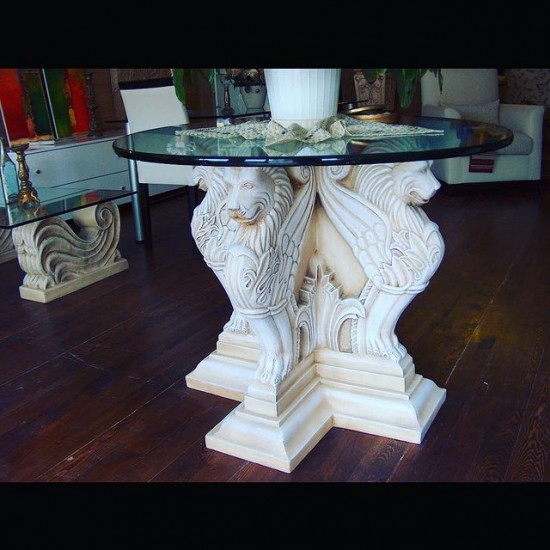
When it comes to designing a house interior, there are certain key elements that can transform a simple space into a stunning masterpiece. In this article, we will explore the essential factors to consider when creating an aesthetically pleasing and functional home environment.
1. Color Palette: The choice of colors is crucial in setting the mood and atmosphere of a room. Understanding the psychology of colors can help you create the desired ambiance. For example, cool colors like blue and green can evoke a sense of calmness, while warm colors like red and orange can add energy and vibrancy to a space. It is important to select a harmonious color palette that complements the overall theme of the house.
2. Furniture and Layout: The furniture selection and arrangement play a significant role in the overall design. Each piece should not only be visually appealing but also functional and comfortable. Consider the size of the room and the flow of movement when deciding on the layout. Strategic placement of furniture can create a sense of balance and harmony within the space.
3. Lighting: Proper lighting is essential to showcase the beauty of a house interior. A well-lit space can enhance the colors, textures, and details of the design. Natural light is always preferable, so maximize the use of windows and skylights. Additionally, incorporate various lighting fixtures such as chandeliers, pendant lights, and wall sconces to create layers of illumination and add a touch of elegance.
4. Texture and Materials: Texture adds depth and visual interest to a room. Experiment with different materials like wood, metal, glass, and textiles to create a tactile experience. Incorporate textures through rugs, cushions, curtains, and decorative accessories. Balancing different textures can create a sense of harmony and prevent the space from feeling flat or monotonous.
5. Accessories and Artwork: The right accessories and artwork can elevate the overall design and reflect the homeowner's personality. Select pieces that are meaningful and add character to the space. From sculptures and paintings to vases and decorative objects, carefully curate the accessories to create focal points and enhance the visual appeal of the room.
6. Functionality: A stunning house interior should not only be visually pleasing but also functional. Consider the needs and lifestyle of the inhabitants when designing the space. Create storage solutions that are both practical and beautiful, and ensure that the furniture and layout cater to everyday activities and routines.
In conclusion, designing a stunning house interior requires careful consideration of key elements such as color palette, furniture and layout, lighting, texture and materials, accessories and artwork, and functionality. By integrating these factors in a harmonious and thoughtful manner, you can create a truly remarkable living space that is both visually appealing and enriching for the occupants.
When it comes to designing your home interior, it's important to strike a balance between functionality and aesthetics. A well-designed space not only looks beautiful, but also serves its purpose effectively. Whether you're renovating your current home or moving into a new one, these tips will help you create a functional and beautiful home interior.
- Plan the Layout: Before diving into the actual design process, it's crucial to plan the layout of your home interior. Consider the flow of your space and how each room connects to one another. This will help you determine the best placement for furniture and ensure that your space is easy to navigate.
- Choose the Right Colors: Colors play a significant role in creating a beautiful and inviting atmosphere. Opt for colors that reflect your personal style and evoke the desired mood for each room. Neutral tones like white, beige, and gray are timeless choices, while bold colors can add a vibrant touch.
- Focus on Lighting: Lighting is an essential element that can greatly enhance the overall ambiance of your home. Utilize a combination of natural and artificial lighting to create a well-lit space. Install proper fixtures and use different types of lighting, such as ambient, task, and accent lighting, to create depth and highlight specific areas.
- Maximize Storage: Clutter can quickly diminish the functionality and beauty of your home interior. Incorporate ample storage solutions to keep your space organized and visually appealing. Consider built-in shelves, cabinets, and storage ottomans to maximize storage without sacrificing style.
- Pay Attention to Furniture: Select furniture pieces that are not only visually appealing, but also comfortable and functional. Consider your lifestyle and how you use each space. Opt for multi-purpose furniture, such as storage beds or coffee tables with hidden compartments, to make the most of your space.
- Add Personal Touches: A beautiful home interior should reflect your personality and interests. Incorporate personal touches, such as artwork, family photos, or meaningful decor items, to make your space feel unique and inviting. These personal touches will also serve as great conversation starters when hosting guests.
By following these tips, you can create a functional and beautiful home interior that not only meets your needs but also exudes style and elegance. Remember to prioritize functionality, choose the right colors, focus on lighting, maximize storage, select appropriate furniture, and add personal touches to make your space truly yours.
Inspirational Ideas for House Interior Design
When it comes to house interior design, there are countless possibilities to explore. From classic and traditional styles to modern and minimalist designs, homeowners have a wide range of options to choose from. Whether you're looking to revamp your entire house or just redesign a specific room, drawing inspiration from various sources can help you create a space that is both functional and aesthetically pleasing.
One of the key elements in house interior design is color. The choice of colors can greatly impact the overall atmosphere of a room. For instance, soft and neutral tones such as beige and cream can create a calming and serene environment, while bold and vibrant colors like red and blue can add energy and personality to a space.
Another important aspect to consider in interior design is the furniture selection. The right furniture pieces can not only provide comfort but also enhance the style of a room. For example, incorporating sleek and modern furniture can create a contemporary look, while opting for antique or vintage pieces can add a touch of elegance and nostalgia.
Lighting plays a crucial role in creating the desired ambiance in a house. The right lighting fixtures can illuminate specific areas and highlight certain architectural details. From pendant lights to wall sconces, the options are endless. Additionally, natural lighting should also be considered, as it can make a space feel bright and spacious.
Accessories and decor items are the finishing touches that complete the overall look of a room. From decorative pillows and rugs to artwork and plants, these elements can add depth and personality to a space. Furthermore, carefully selecting accessories that complement the color scheme and style of the room can tie everything together.
Lastly, it's important to create a cohesive and harmonious flow throughout the house. Each room should connect seamlessly to the next, both in terms of design and functionality. This creates a sense of unity and allows for a smooth transition from one area to another.
In conclusion, house interior design is a creative and exciting process that allows homeowners to express their personal style. By considering factors such as color, furniture, lighting, accessories, and overall flow, you can create a space that not only looks visually appealing but also serves its intended purpose. Whether you prefer a classic or contemporary style, the key is to find inspiration and tailor it to your individual needs and preferences.
| Key Elements in House Interior Design |
|---|
| Color: The choice of colors greatly impacts the overall atmosphere of a room. |
| Furniture Selection: The right furniture pieces enhance both comfort and style. |
| Lighting: Proper lighting fixtures create the desired ambiance in a house. |
| Accessories and Decor: Finishing touches complete the overall look of a room. |
| Flow: Creating a cohesive and harmonious flow throughout the house is essential. |
Adding Personality to Your Home with Interior Design
When it comes to decorating your home, interior design plays a crucial role in adding personality and style to your space. Whether you're moving into a new house or simply looking to give your current home a fresh makeover, there are various ways to infuse your personal touch into your living environment. In this article, we will explore some key tips and techniques to help you add personality to your home through interior design.
First and foremost, it is essential to have a clear vision of the atmosphere you want to create in your home. Take some time to reflect on your personal preferences, interests, and lifestyle. Are you drawn to minimalist and contemporary designs? Or perhaps you feel more connected to rustic and eclectic styles? Understanding your unique taste will serve as a foundation for your interior design choices.
Next, consider incorporating elements of your personality through color schemes and patterns. Colors have a significant impact on our emotions and can evoke specific moods. If you are a vibrant and outgoing individual, you may opt for bold and energetic colors such as reds, oranges, or yellows. On the other hand, if you prefer a more tranquil and peaceful ambiance, you can choose soft and soothing hues like blues, greens, or neutrals. Similarly, patterns can also reflect aspects of your personality - whether it's through floral prints, geometric shapes, or abstract designs.
Furniture and accessories are another way to add character to your home. Look for pieces that resonate with you and speak to your personal style. Whether it's vintage furniture, modern statement pieces, or handmade artistic creations, each item should hold sentimental value and reflect your individuality. Don't be afraid to mix and match different styles to create a visually stimulating and unique atmosphere.
Lighting is a crucial aspect of interior design that often gets overlooked. The right lighting can instantly transform the ambiance of a room and highlight its key features. Consider using a combination of natural light, task lighting, and ambient lighting to create layers and depth in your space. Additionally, choosing light fixtures that align with your personal aesthetic can further enhance the overall atmosphere.
- Personalize your walls with artwork and photographs. Displaying art that speaks to you and showcases your interests can act as a conversation starter and make your home feel more personalized.
- Introduce plants and greenery into your space. Not only do they add a touch of nature, but studies have shown that plants can also improve indoor air quality and promote a sense of well-being.
- Add textures through fabrics and textiles. Incorporating pillows, throws, rugs, and curtains can create a cozy and inviting atmosphere while adding depth and visual interest.
- Declutter and organize your belongings. A clutter-free space not only looks better but also allows your personality and design choices to shine through. Consider storage solutions that are both functional and stylish.
In conclusion, adding personality to your home with interior design is all about infusing your unique style, interests, and preferences into every aspect of your living space. By carefully selecting color schemes, furniture, accessories, lighting, and other design elements that align with your personality, you can create a home that truly reflects who you are. Remember, there are no set rules - the key is to embrace your creativity and make choices that make you feel happy and at ease in your own space.
Maximizing Space in Your House with Clever Interior Design Techniques
When it comes to interior design, one of the greatest challenges homeowners face is maximizing space. Whether you live in a small apartment or a spacious house, making the most of your available space can greatly enhance your living experience. In this article, we will explore some clever interior design techniques that can help you maximize space in your house.
1. Use Light Colors
Opting for light colors on your walls, furniture, and decor can create an illusion of a larger space. Light-colored surfaces reflect more light, making the room appear brighter and more open. Consider using shades of white, beige, or pastel colors to make your rooms feel more spacious and airy.
2. Remove Unnecessary Clutter
Clutter can quickly make a room feel small and cramped. Take the time to declutter and get rid of any items that you no longer need or use. Consider investing in storage solutions such as baskets, shelves, or under-bed storage to keep your belongings organized and out of sight.
3. Utilize Vertical Space
When you have limited floor space, utilizing vertical space is key. Install shelving units that reach up to the ceiling to maximize storage capacity. Hang pendant lights or floating shelves to add functional decor without taking up valuable floor space.
4. Choose Multi-Functional Furniture
Investing in multi-functional furniture is a smart way to maximize space in your house. Look for pieces that serve multiple purposes, such as a sofa bed or a coffee table with storage compartments. This allows you to make the most of your furniture while still keeping the room functional and spacious.
5. Incorporate Mirrors
Strategically placing mirrors in your house can create an illusion of depth and visually expand the space. Consider adding a large mirror on a wall opposite a window to reflect natural light and make the room feel bigger. You can also use mirrored furniture or decorative mirror panels to enhance the spacious feel.
| Technique | Description |
|---|---|
| Use Light Colors | Opt for light-colored surfaces to create a brighter and more open space. |
| Remove Unnecessary Clutter | Declutter and invest in storage solutions to keep your belongings organized. |
| Utilize Vertical Space | Install shelving units that reach up to the ceiling to maximize storage capacity. |
| Choose Multi-Functional Furniture | Invest in furniture pieces that serve multiple purposes to make the most of your space. |
| Incorporate Mirrors | Place mirrors strategically to create an illusion of depth and visually expand the space. |
By implementing these clever interior design techniques, you can maximize space in your house and create a more spacious and enjoyable living environment. Remember, the key is to think creatively and make the most of every inch of your space. Good luck!
For more information on interior design and maximizing space, you can visit Interior Design.
Budget-Friendly Ways to Enhance Your House Interior Design
When it comes to enhancing the interior design of your house, you don't always have to break the bank. With some creativity and a little bit of DIY, you can transform your living space without spending a fortune. In this article, we will discuss some budget-friendly ways to elevate your house's interior design.
1. Rearrange Your Furniture
One of the simplest and most cost-effective ways to enhance the look of your house is by rearranging your furniture. Play around with different layouts and see which one works best for your space. You'll be amazed at how much difference a new furniture arrangement can make in creating a fresh and inviting atmosphere.
2. Add a Pop of Color
A quick and easy way to add life to your interior design is by incorporating a pop of color. Consider painting an accent wall in a bold and vibrant shade, or add colorful throw pillows and blankets to your seating area. This simple touch can instantly brighten up the room and create a focal point.
3. DIY Artwork
Who says you have to spend a fortune on artwork? Get creative and make your own! Whether it's painting, drawing, or crafting, DIY artwork can add a personal touch to your space and showcase your unique style. Plus, it's a fun and budget-friendly way to unleash your creativity.
4. Update Lighting Fixtures
Lighting plays a crucial role in the overall ambiance of your house. Consider replacing outdated fixtures with modern and energy-efficient alternatives. Install dimmer switches to create different moods in each room. By updating your lighting fixtures, you can enhance the atmosphere and make your house feel more inviting.
5. Incorporate Plants
Bringing nature indoors is another fantastic way to enhance your house's interior design. Plants not only add freshness and beauty to a space but also improve the air quality. Choose low-maintenance plants like succulents or ferns if you don't have a green thumb. They are easy to care for and can thrive in various light conditions.
6. Declutter and Organize
A cluttered space can make even the most beautiful interior design appear chaotic. Take the time to declutter and organize your belongings. Get rid of items you no longer need or use and find creative storage solutions for the things you want to keep. By creating a clean and organized environment, you can make your house feel more spacious and visually pleasing.
Enhancing your house's interior design doesn't have to break the bank. With these budget-friendly tips, you can elevate your living space without spending a fortune. Get creative, have fun, and enjoy the process of transforming your house into a beautiful and inviting home.
The Latest Trends in House Interior Design
When it comes to designing the interior of your house, staying up-to-date with the latest trends is essential. Not only does it make your home look modern and stylish, but it also adds value to your property. In this article, we will explore the latest trends in house interior design that are taking the industry by storm.
1. Minimalistic Designs
Minimalism has been a popular trend in recent years, and it continues to dominate the world of house interior design. This style focuses on clean lines, clutter-free spaces, and a neutral color palette. The key to achieving a minimalistic design is to only include essential furniture and decor items, while keeping the overall look simple yet sophisticated.
2. Biophilic Designs
Inspired by nature, biophilic designs aim to incorporate natural elements into the indoor space. This trend focuses on bringing the outdoors in, utilizing materials such as wood, plants, and natural light. Biophilic designs not only create a serene and calming environment but also have numerous health benefits, such as improved air quality and reduced stress levels.
3. Smart Home Technology
In today's digital world, integrating smart home technology into the interior design is becoming increasingly popular. From voice-controlled lighting systems to automated temperature control, these technologies not only enhance convenience but also add a futuristic touch to your home. With the ability to control various aspects of your house with just a smartphone or voice commands, smart home technology is here to stay.
4. Sustainable Materials
Eco-consciousness is on the rise, and this has led to an increased demand for sustainable materials in house interior design. Choosing materials such as bamboo flooring, recycled glass countertops, and low VOC paints not only helps reduce your carbon footprint but also adds a unique and eco-friendly touch to your home. Incorporating sustainable materials into your interior design not only promotes a healthier environment but also showcases your commitment to sustainability.
5. Statement Ceilings
While walls have always been a focal point in interior design, statement ceilings are gaining popularity. Instead of leaving the ceiling plain and unadorned, homeowners are now exploring various options such as bold colors, intricate patterns, and unique textures to make a statement. Adding visual interest to the ceiling can completely transform a space and create a more visually dynamic interior.
6. Mix of Vintage and Modern
A popular trend in interior design is the seamless blend of vintage and modern elements. This eclectic style combines the old and the new, creating a unique and timeless design. Mixing vintage furniture or decor pieces with modern finishes and accessories adds depth, character, and personality to your home, while also creating a conversation starter for guests.
In Conclusion
As the world of house interior design continues to evolve, staying updated with the latest trends is crucial. Incorporating minimalistic designs, biophilic elements, smart home technology, sustainable materials, statement ceilings, and a mix of vintage and modern styles can elevate the aesthetic appeal of your house. So, embrace these trends and create an interior that reflects your style and personality while also staying ahead of the curve.
Frequently Asked Questions
Interior design is the art and science of enhancing the interior of a building to achieve a healthier and more aesthetically pleasing environment for the people using the space.
Interior design is important as it can greatly impact the mood, productivity, and overall well-being of individuals. It helps in creating functional and visually appealing spaces that reflect the personality and needs of the inhabitants.
The cost of interior design services can vary greatly depending on factors such as the scope of the project, the location, and the expertise of the designer. It is best to consult with a professional designer to get an accurate estimate for your specific project.
There are various styles of interior design, including modern, contemporary, traditional, minimalist, industrial, Scandinavian, bohemian, and mid-century modern, among others. Each style has its own unique characteristics and aesthetics.
When choosing an interior designer, it is important to consider their experience, portfolio, communication skills, and compatibility with your design preferences. It is also helpful to read reviews and ask for recommendations from trusted sources.
The process of interior design typically involves several steps, including initial consultation, space planning, concept development, material selection, furniture and decor selection, project management, and final installation. The exact process may vary depending on the project.
Yes, interior design can be done on a budget. A skilled designer can work within your budget constraints to create a beautiful and functional space by making smart choices in terms of materials, furnishings, and design elements.
Hiring an interior designer is not necessary, but it can greatly benefit those who want professional guidance and expertise in creating a personalized and well-designed space. A designer can save you time, money, and help you avoid costly mistakes.
Yes, interior design can increase the value of a home. A well-designed and aesthetically pleasing interior can make a positive impression on potential buyers and increase the perceived value of the property.
The role of an interior designer is to create functional and visually appealing spaces that meet the needs and preferences of the clients. They are responsible for space planning, material selection, color schemes, furniture and decor choices, and overall coordination of the design project.





